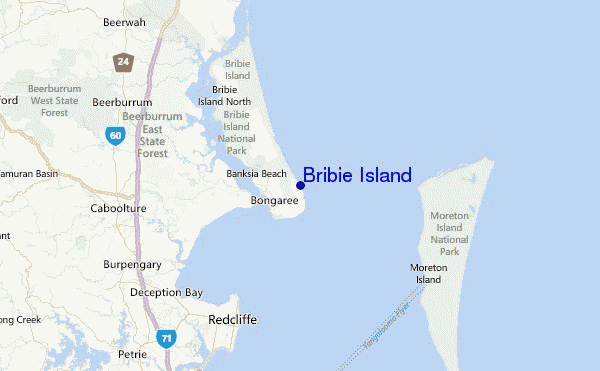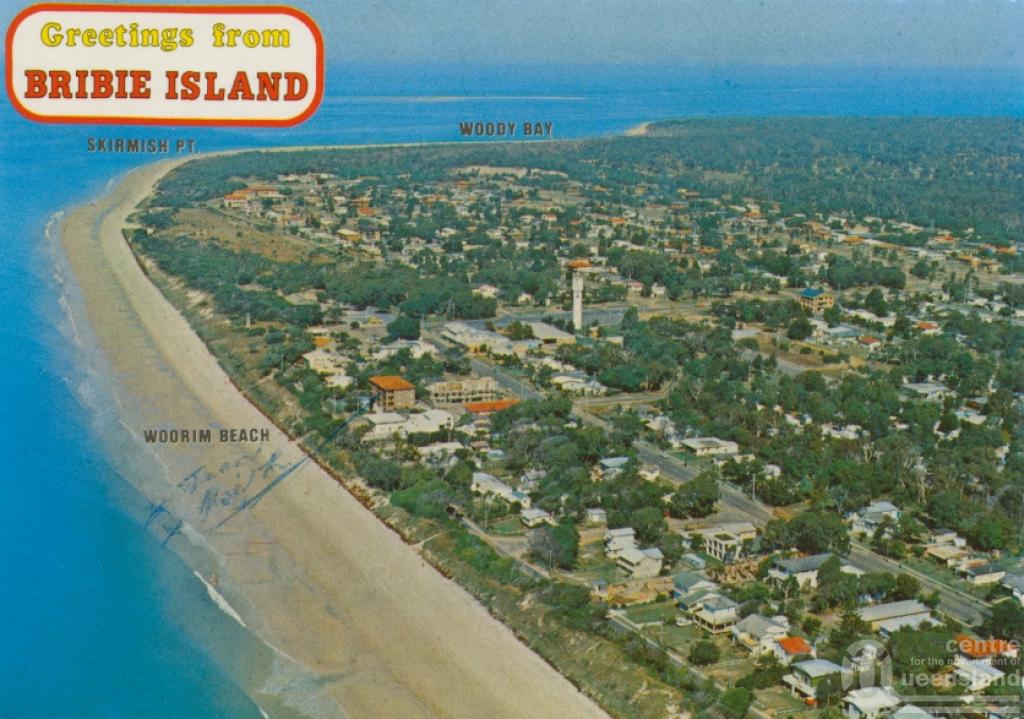Bribie Island
Bribie Iceland is a large sand island off the coast of Australia. It is located about 70 kilometers north of Queensland's capital Brisbane and forms the northern end of Moreton Bay. Bribie Iceland is 34 km long and up to 8 kilometers wide. Is separated from the mainland by the Pumicestone Passage Bribie Iceland ( " pumice Transit ").
- 2.1 Inhabited Areas
- 2.2 Bribie - Iceland National Park
History
18th and 19th centuries
The first European to see the island, was James Cook in May 1770. He had on his first expedition in April 1770 Botany Bay, now Sydney, discovered and passed on his way forward along the Australian coast to the north and Moreton Bay and Bribie Iceland. He also called the Pumicestone Passage, after he had noticed there smaller pieces of pumice stone in the water. However, the island itself he passed, without exploring them or designate.
In 1799 it was Matthew Flinders, who entered the island as the first European explorers and explored. He should have met very unfriendly Aborigines who lived on the island.
Its name from the island until the middle of the 19th century by a prisoner of the Moreton Bay penal colony, who was a gifted shrimp vessels, for which he was rewarded by the guards of the penal colony with his freedom. Bribie married an Aboriginal woman and settled down with her on the island, which has since borne his name.
20th century
The further exploration and colonization of Bribie Iceland, progress was very slow. A fish factory was only for a few years, the first jetty was built in 1912 and 1919 the first car was transported to the island. The connection to the power grid was not made until 1953.
A major development thrust experienced the island as of the year 1963, when the bridge was built over the Pumicestone Passage to the mainland. This Bribie Iceland was the first island in Queensland, which is connected by bridge to the mainland.
Presence
Today on Bribie Iceland live about 16,000 people. The island is a popular destination for tourists.
The island today can be divided into two broad areas: first, the uninhabited and forested north, which is largely protected by the Bribie - Iceland National Park, on the other inhabited the south of the island. Locals also distinguish between the peaceful passage Side along the Pumicestone Passage to the west of the island and the rather stormy Surfside on the east coast of the island.
Inhabited areas
On Bribie Iceland there is no main town and not a city, but several neighborhoods that are managed by the Moreton Bay Regional Council. Currently, there are four inhabited districts. These are from north to south on the passage Side Banksia Beach, Bellara and Bongaree and Woorim is the only district in the Surfside. On some cards, a fifth district, Welsby, noted, however, no construction or development work took place there so far yet.
Bribie Iceland enjoys in recent years more and more popular as a retreat with the Australians, as well as a holiday destination for tourists who are looking for some peace and solitude of the great tourist centers.
The infrastructure on the island is now comparable with other small towns. There are several shopping centers in which all the major supermarket chains in the country are represented, several hotels of all classes, a movie theater, two golf courses, as well as a bus service to Caboolture. In Caboolture is following the train to Brisbane.
Bribie - Iceland National Park
The National Park starts just north of Banksia Beach and extends as a belt along the west coast up to The Spit at the northern tip of the island and continue along the east coast south to Woorim. It covers about 5,580 acres. In the inland there are pine forest and wetlands that are not part of the National Park.
In the national park is home to kangaroos, wallabies, emus, dingoes and numerous reptiles and snakes. On the island, about 200 species of birds are found and live in the waters around the island dolphins.
Tourist of the park is well developed. There are several picnic and camping sites that are accessible by four wheel drive vehicles or by boat. In the park there are several routes that can be passed only by four-wheel vehicles. In many places it is allowed to drive on the beach. In order to drive in the park, you need a permit, which can be purchased from the National Park Authority or the local authorities.










